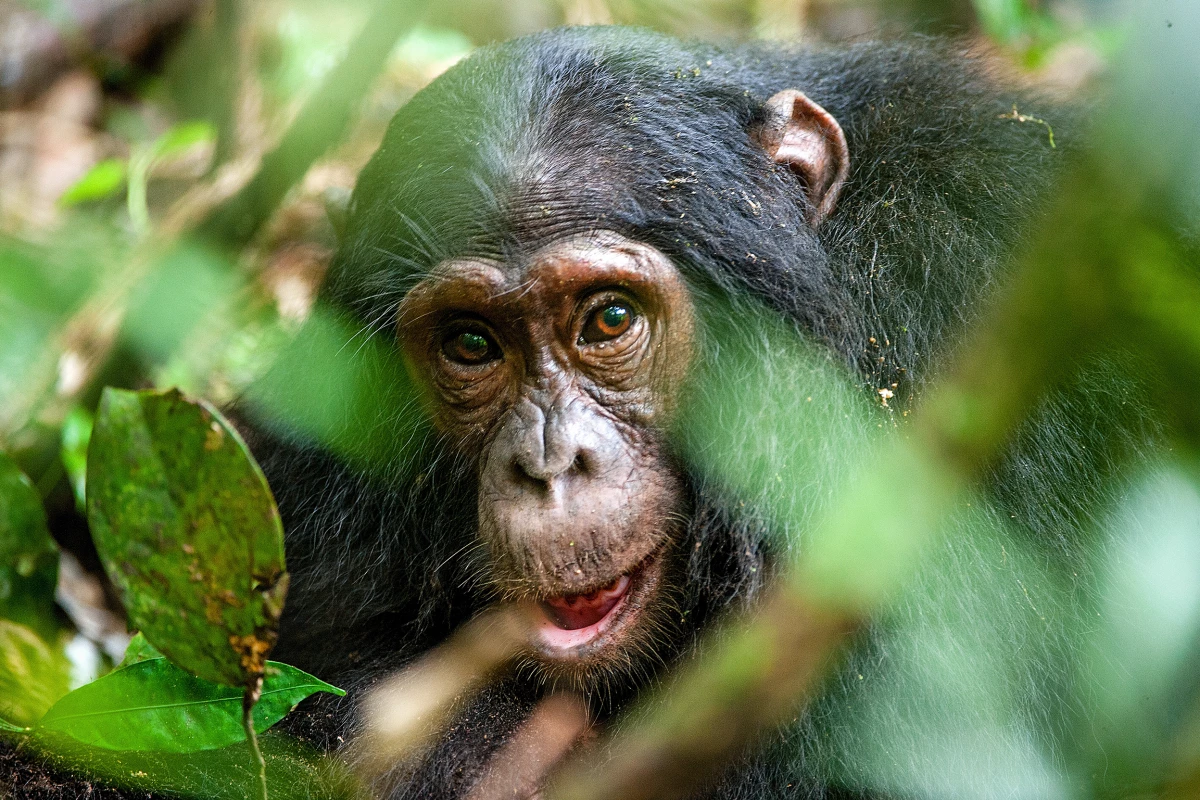Other than a few species of whale, humans are the only mammals that consistently demonstrate the unusual phenomenon of menopause. Most animals maintain their reproductive ability for the vast majority of their lifespan. Humans are big outliers, with females often spending up to 50% of their life in a postreproductive state.
A new study published in the journal Science is shaking up the world of evolutionary biology by offering some of the first evidence of menopause in a wild, non-human primate population. The findings reveal a community of female chimpanzees in Uganda display both hormonal and demographic signs of menopause, living for up to 20 years in a postreproductive state.
Kevin Langergraber, corresponding author on the new study, says there are plenty of singular examples of animals displaying signs of menopause. Many captive animals in zoos, for example, live years after their last reproduction. According to Langergraber this is thought to be a result of the artificially optimized nature of captivity.
“We know that in captivity there are quite a few species (including chimps) that can have a substantial postreproductive lifespans, with many individuals living quite long after their last reproduction,” Langergraber explained to New Atlas. “This is because they get medical care, have abundant food, and no predators. Our novel finding is that we have demonstrated a substantial postreproductive lifespan in a chimp population that lives in the wild. Previously, this was demonstrated only for humans and a few species of toothed whales.”
The new findings emerged from a long-term study known as the Ngogo Chimpanzee Project. The conservation/research project has followed a large community of chimpanzees in Uganda’s Kibale National Park for nearly 30 years. Langergraber, from Arizona State University, has co-directed the project since 2011.
The study utilized 21 years of data, comprising dozens of female chimpanzees, to calculate a metric dubbed post-reproductive representation (PrR). As evolutionary biologist Michael Cant explains in a commentary on the new research, PrR is a calculation of the amount of adult life span an animal spends in a postreproductive state.
“For most mammals, including other chimpanzee populations, PrR is close to zero (0.001 to 0.04),” Cant writes. “But in the Ngogo population, [the new study] found a PrR of 0.2, meaning that females on average live 20% of their adult years in a postreproductive state. This value is close to that observed in humans (0.3 to 0.47) and some species of whales (0.24 to 0.4).”
One question raised by these novel findings is why this particular Ngogo chimpanzee population displays such a significant postreproductive lifespan. Langergraber says it's possible the unique ecological conditions experienced by the Ngogo allow for longer lifespans than most wild chimp populations. However, he also suggests longer chimpanzee lifespans may not be historically unusual.
“[A] possibility is that substantial postreproductive lifespans were more common throughout chimp evolutionary history,” Langergraber says. “We just haven't seen them in other contemporary populations because survival past 50 is low due to recent negative impacts of humans. Most other chimp groups under study today live in more degraded habitats than Ngogo, and have suffered from serious disease epidemics that originated in humans.”
Perhaps the most compelling question raised in this new study is what purpose this substantial PrR serves in the chimpanzee population. The uniqueness of menopause in humans is often explained by an idea known as the grandmother hypothesis. The idea suggests human females offer significant value helping raise their children’s offspring in their postreproductive years. Many researchers point to the grandmother hypothesis as a strong grounding for why menopause is so unique to humans.
However, female chimpanzees are known to live apart from their offspring, dispersing to new groups as they get older. So the grandmother hypothesis offers no clues as to why the trait of menopause has evolved in this chimpanzee community.
Langergraber presents an alternative idea to explain the presence of menopause in the Ngogo chimpanzees. It’s called the intergenerational conflict hypothesis.
“In certain species, including chimps – and more controversially, humans – their sex-biased dispersal system leads to females becoming more closely related to group members as they age,” Langergraber explains. “In chimps (and again, perhaps also ancestral humans), it is males that stay in the group in which they were born while females move to a new group to reproduce. So females are basically unrelated to everyone when they join a new group, but eventually start having sons who stay and produce grandkids for them.
“Imagine there is conflict between females for a limited number of reproductive opportunities. The intergenerational conflict hypothesis predicts that older females should cede these limited reproductive opportunities to the younger females and stop reproducing. From the older females' perspective, some of these offspring produced by the younger females are going to be the older female's grandkids (i,e., their sons' offspring). Younger females, in contrast, have nothing to gain from the reproduction of the older females. Very few species have this sort of system of age graded female relatedness (i.e., chimps, some toothed whales, perhaps humans too), but those that do tend to also have substantial post reproductive lifespans.”
Langergraber argues the grandmother hypothesis and the intergenerational conflict hypothesis are not mutually exclusive. So in humans it is likely that both ideas play a role in the evolutionary development of menopause.
In his commentary on the study Cant also suggests intergenerational knowledge transfer could play a part in the benefits of a postreproductive chimpanzee to a group. For example, an elder’s experience in tracking down rare food sources could be of value.
“In killer whales, postreproductive females lead the group in search of food, particularly when prey is scarce,” Cant notes. “Could older female chimpanzees confer similar benefits on others in their group? Further study of the postreproductive Ngogo females would help answer this question.”
The new study was published in the journal Science.




